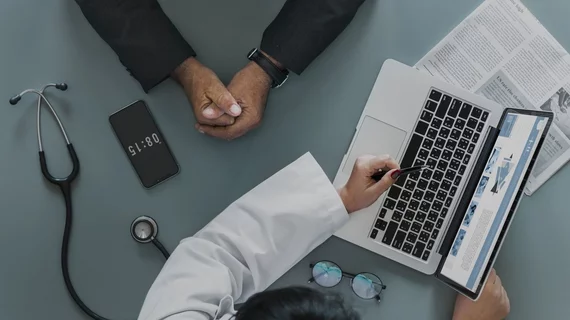Virtual radiology consultations during primary care visits help maximize specialty’s value
Point-of-care virtual radiology consultations in collaboration with primary care physicians can potentially help maximize the specialty’s value, experts charged Monday.
Massachusetts General Hospital recently experimented with this change, videoing in rads to discuss imaging results during a regular PCP visit. In follow-up surveys, primary care docs and patients expressed satisfaction with the service. About 88% of consumers said they’d like to receive their results from rads in the future compared to 56% before trying virtual consultations.
“Such a model has the potential to increase radiologist engagement and value in patient care,” Dania Daye, MD, PhD, with Mass General’s Department of Radiology, and colleagues wrote July 19 in JACR. “Taken together, this model may advance radiology’s role in patient care by promoting patient-centered practices and by improving the quality of care that radiologists provide.”
Daye et al. tested their intervention at an internal medicine clinic, incorporating three primary care physicians and 43 enrolled patients. Both completed post-visit surveys, while consumers shared their perceptions beforehand, too.
When visiting for their checkup, Mass General notified radiologists to log onto its homebuilt virtual visit platform. After accepting the consultation and confirming details, the virtual visit launched. Rads shared their screen with both PCP and patient to discuss findings, using annotations, diagrams and language easily understood by a layperson. Sessions lasted 5-10 minutes, minimizing disruptions in rads’ workdays. Investigators said they could easily scale this model, “especially if reimbursement opportunities become available for such visits in the future.”
In follow-up surveys, 93% of patients and 97% of primary care docs said they were satisfied. Another 88% said the video visit bolstered knowledge of their condition, and 91% were interested in using the service again. Consultations proved useful in helping PCPs reach care-management decision during 83% of visits.
“We speculate that seeing medical images impacts patient’s understanding of their disease by potentially making the disease process more concrete. This may contribute to increased compliance with prescribed treatment plans,” the authors noted.

